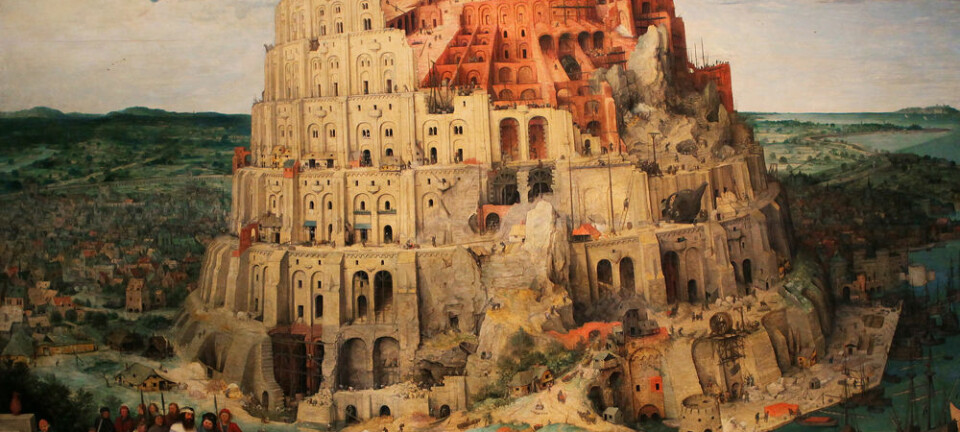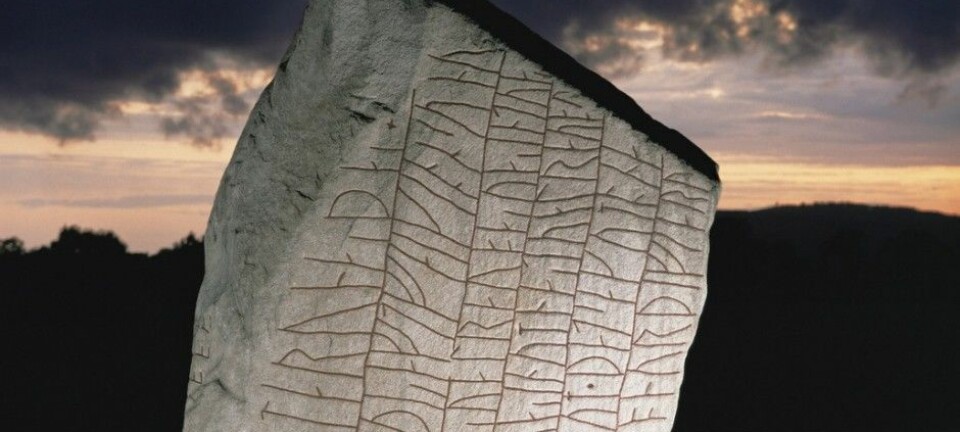An article from University of Oslo
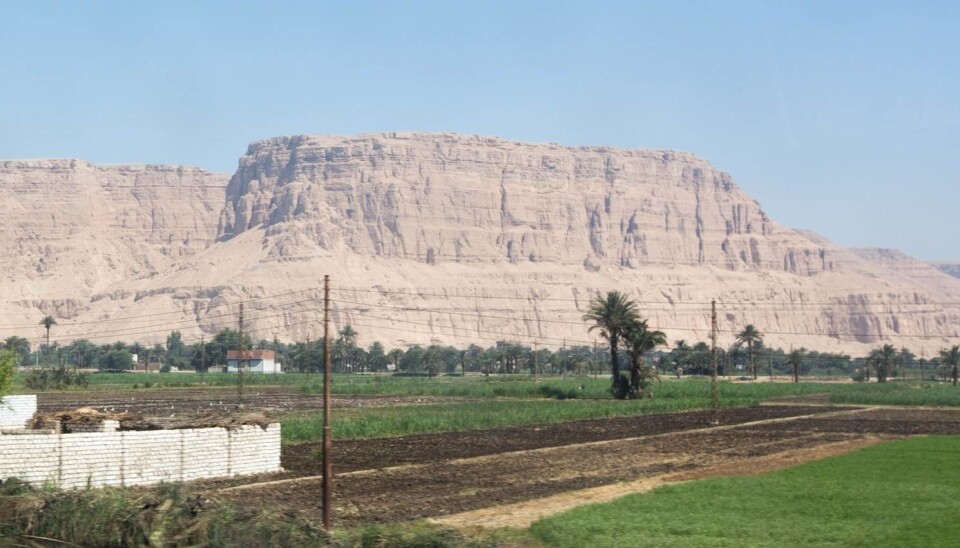
Unorthodox Gospels were Copied in the Earliest Christian Monasteries
The provenance of the Nag Hammadi Codices, famous for containing unorthodox texts like the Gospel of Thomas, the Gospel of Philip, and the Secret Book of John, has been a point of contention among scholars ever since they were discovered in 1945. Recent research strongly supports the hypothesis that they were manufactured and read by monks belonging to one of the earliest monastic communities in Egypt, traditionally regarded as completely orthodox.
For centuries the mysterious Nag Hammadi Codices lay buried and forgotten under a cliff in rural Egypt until a local famer found them in 1945, close to the Upper Egyptian town of Nag Hammadi.
The 13 papyrus books (codices) turned out to contain gospels, apocalypses, prayers, liturgical writings and acts of various apostles, none of which were included in the Bible. They also include observations and commentaries on topics such as the meaning of existence, the creation of the world and humankind, and the nature of salvation. Since their discovery these works have provoked enormous interest amongst scholars and the general public alike due to the startling new light they throw on the early Christian movement.
Professor Hugo Lundhaug at the Faculty of Theology, who heads a research project investigating the provenance and function of these codices (the NEWCONT project), tells us that the ideas found in the Nag Hammadi Codices are often very different from those familiar to us in the Bible.
”These codices demonstrated that a far greater diversity of ideas existed amongst people who considered themselves Christian than was previously thought,” Lundhaug explains.
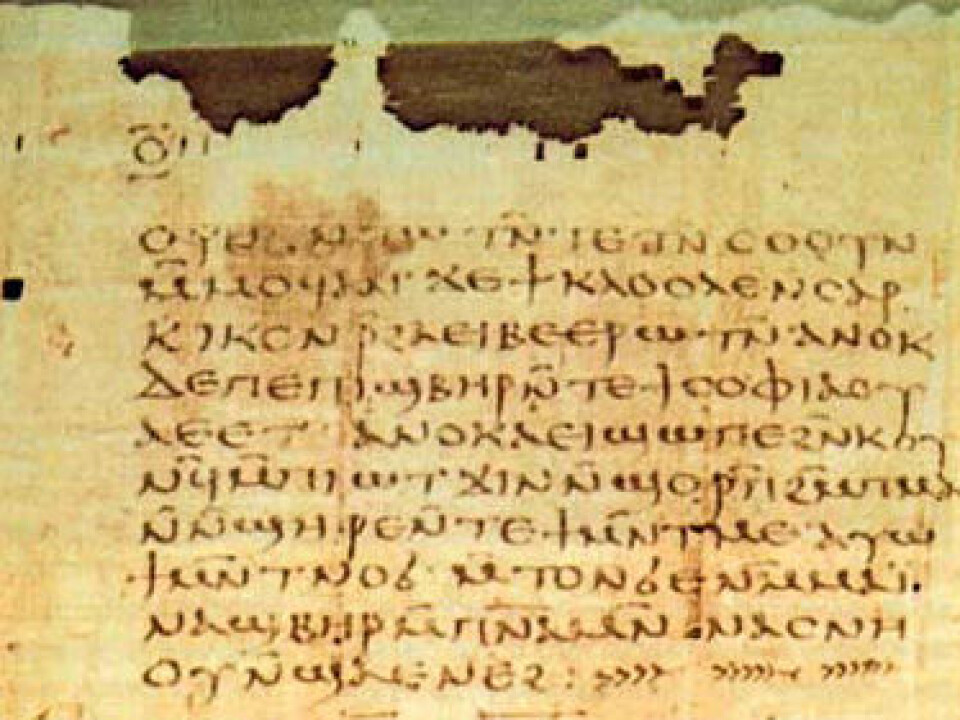
The Codices are written in Coptic, a form of the Egyptian language used in the late antique period. They contain 52 works, most of which were previously unknown to modern scholars. It is probable, although not certain, that most of the texts were originally composed in Greek and have been translated into Coptic for the benefit for non-Greek readers, but for the purposes of Lundhaug’s research project it is the Coptic texts as they have been preserved in the manuscripts, and the producers and readers of these manuscripts that is the focus.
The Question of Origins
The question of who owned and produced the Nag Hammadi Codices is crucial when we want to assess their historical significance. In order to understand what these books may have meant to those who read them, we need to know who actually read them.
In their recently published book, The Monastic Origins of the Nag Hammadi Codices, Lundhaug and Lance Jenott, a post-doctoral research fellow in the NEWCONT-project, argue that the Nag Hammadi Codices were made by monks belonging to one of the earliest Christian monastic organizations. By thoroughly exploring the issues surrounding the discovery of the codices, their material aspects, and their status as fourth- and fifth-century books of Christian literature, they show that these books were most probably produced and read by Pachomian monks active in the area where the codices were discovered.
The question of who produced and used these codices, whether a group of heretical “Gnostics,” a wealthy “syncretistic” individual or individuals, or Christian monks, has been debated for decades. ”Since there was still no scholarly consensus on the matter after all these years, there was a need to examine the evidence more closely from as many angles as possible, and to assess the various alternatives as thoroughly as possible,” Lundhaug states.
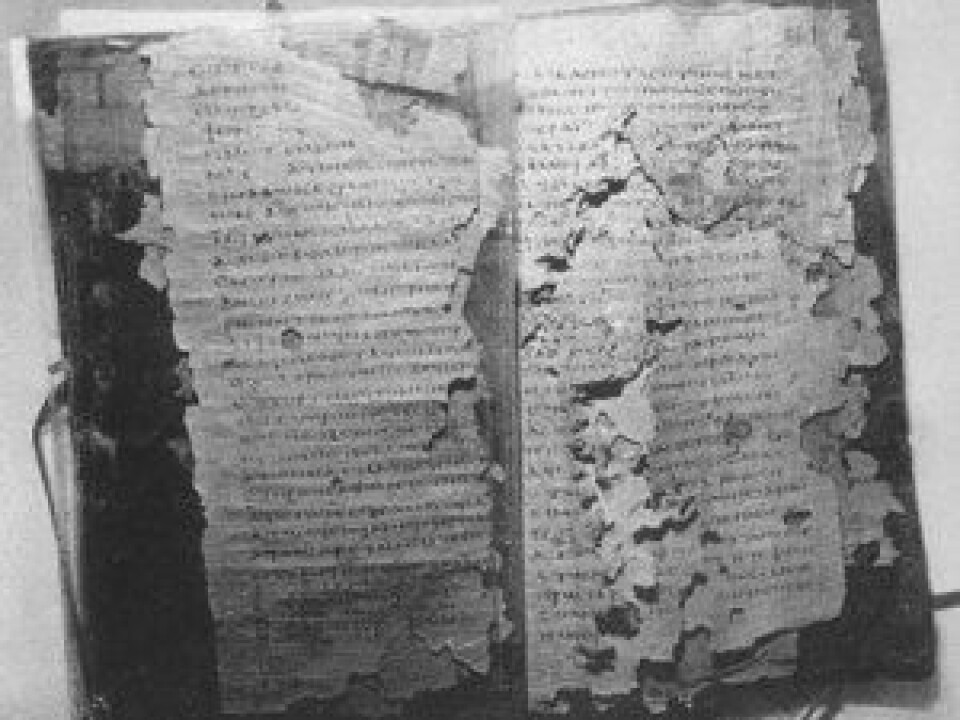
The research conducted in the NEWCONT-project has left him and Jenott in no doubt that the Nag Hammadi Codices originate from and were read by Christian monks.
In earlier attempts to answer the question of ownership, the controversial contents of the codices have led many scholars to insist that they could not have belonged to Christian monks, but rather to a group of ‘Gnostics,’ heretics influenced by Greek philosophy, organized in exclusive communities, whose members desired access to secret knowledge that was revealed only to an elect few.
Those who have held this view have regarded the codices as ‘Gnostic’ books that could not have been read by orthodox Christians, such as the early Christian monks, and especially not by the monks of the Pachomian monastic community, who are traditionally regarded as having been very much in line with the dominant Alexandrian orthodoxy of the time.
Contests Claims of Gnostic Origins
Inspired by recent research that challenges the usefulness of the very category of ‘Gnosticism,’ Lundhaug and Jenott argue that this category has created much confusion in discussions regarding the provenance of the Nag Hammadi Codices.
They find ‘Gnosticism’ to be a highly misleading category that has led scholars to ask the wrong questions and to offer unnecessary explanations, and emphasize that one of their aims have been to move the discussion of the origin and use of the codices away from being a study of ‘Gnosticism.’ They have therefore consciously jettisoned the term ‘Gnostic’ in their analysis.

“Contrary to what has often been argued, the texts found in the Nag Hammadi Codices are difficult to allocate to any one of the several viewpoints commonly given the scholarly label ‘Gnostic,’ ” Lundhaug says.
”The texts taken together do not readily conform to common stereotypical ideas of ‘Gnostic’ attitudes, such as a ‘hatred of the world and its creator,’ or an ‘anti-biblical’ stance”, he explains. Further, it is hard to find concrete evidence for societies or organisations in the fourth and fifth centuries that would fit modern scholarly notions of ‘Gnostics.’
Monks and Their Reading Habits
The idea that the Nag Hammadi Codices may have belonged to Egyptian monks was suggested by some of the scholars who first studied the codices. They noted in particular the existence of several monasteries in the area close to the discovery site, such as the major Pachomian monasteries at Sheneset (Chenoboskion), Pbow, and Tabennesi.
“However, this suggestion has attracted considerable criticism from other scholars”, Lundhaug explains. “Many have found it impossible to imagine that the early Pachomian monks, commonly considered to be a bastion of orthodoxy, could have read such ’heretical’ literature.”
Some scholars have emphasized what they have regarded to be the ‘philosophical’ and ‘anti-biblical’ contents of the Nag Hammadi texts, and have argued that they must have belonged to a group of urban intellectuals sufficiently educated in Greek philosophy to read and understand them.
On the contrary, Lundhaug and Jenott argue that the type of urban intellectuals imagined by those who have championed this hypothesis would have simply read these texts in Greek, and not in Coptic, the language of the Nag Hammadi Codices:
“If the owners were urban intellectuals steeped in Greek philosophy and culture, why would they read their literary texts in Coptic and bother to translate them from Greek in the first place? Why not simply read the texts in Greek?” Lundhaug and Jenott ask.
Rather than having been copied to be read by people just as skilled in Greek as in Coptic, Lundhaug and Jenott maintain that the Nag Hammadi texts were most likely translated into Coptic for the benefit of a monastic community which would have included a number of non-Greek readers.
The Case for a Monastic Origin
Lundhaug and Jenott make their case for a monastic origin by surveying a wide breadth of material and discussing the question from a multitude of angles. They show how biographies of saints, monastic rules, documentary papyri and archaeological evidence paint a picture of early monasticism as more diverse than has often been often recognised, both in terms of organization and theology, and how books like the Nag Hammadi Codices fit into this picture.
The available evidence for the literary practices of Egyptian monks in the early centuries indicates that monks were reading more diverse literature than we might expect. ”The reading material of monks at that time cannot always be labelled as ‘orthodox,’” Lundhaug argues.
”Monks were criticised on several occasions by Church authorities for reading non-canonical or apocryphal literature. Despite this condemnation, such works continued to form part of monastic libraries for many centuries to come”, he explains.
The existence of monastic rules regulating the circulation of literature also indicate the fact that monks did not always read just what their superiors wanted them to read, and that there was a concern with controlling who could read what.
Lundhaug and Jenott also note how many of the themes that appear in the texts of the Nag Hammadi Codices would have appealed to monks. In addition to a pervasive emphasis on ascetic practices, they include discussions of subjects such as spiritual progress, revealed knowledge, visions, heavenly ascents, angels and demons, and the fate of the soul after death.
There is also a significant emphasis on scriptural interpretation, were especially the first chapters of Genesis, but also other parts of what has come to be regarded as canonical Scripture, including the New Testament Gospels and the letters of Paul, are alluded to and interpreted in many different ways.
Considering what we know of the early Pachomian monks’ practices of Scriptural reading, memorization, and interpretation, it is easy to imagine how the Nag Hammadi Codices might fit into a monastic library alongside Biblical texts and other, well-known, monastic works of the period.
Evidence on Scrap Paper
Lundhaug and Jenott also discuss the production techniques used in the making and writing of the codices and the relationship of the Nag Hammadi Codices to other Christian books produced at around the same period.
“The Nag Hammadi Codices are not unique in their make-up and scribal practices,” Lundhaug tells us.
“In fact they closely resemble other books, including biblical manuscripts, which are likely to have come from a monastic milieu.”
One such example is the manuscript known as P75, one of the most important New Testament manuscripts, containing the Gospels of Luke and John, which was discovered only a few kilometers from where the Nag Hammadi Codices were found, and which may also derive from one of the nearby Pachomian monasteries.
Lundhaug and Jenott pay particular attention to the “cartonnage” material used to stiffen the leather covers of the Nag Hammadi Codices. Cartonnage was traditionally made up of scraps of discarded papyrus from personal letters, account books, and so on. It therefore provides invaluable evidence for everyday life and the social context in which the codices were produced.
In the case of the Nag Hammadi Codices, these cartonnage papyri include an entire collection of personal letters written to and from monks, strongly suggesting that the codices themselves were produced by monks. These documents include several references to a monk named Sansnos who writes about both economic and philanthropic issues with his correspondents.
Some scholars have, however, dismissed these fragments as irrelevant, arguing instead that such letters might have been simply collected from a local rubbish heap, and therefore shed no light on the book-makers. Lundhaug and Jenott argue for the likelihood that these documents were in fact the property of the people who made the codices and, as such, are valuable evidence for pinpointing the origin of these books.
One highly significant letter is in fact addressed to a certain ‘Father Pachomius,’ whom Lundhaug and Jenott maintain is probably the famous abbot Pachomius himself. If so, then this letter demonstrates beyond doubt a close connection between the makers of the codices and the nearby Pachomian monasteries.
Pachomian Monks
Lundhaug and Jenott discuss which type of monastic group may have owned the codices, and come to the conclusion that the Pachomian Federation, founded by Pachomius in the early fourth century and traditionally held to be the earliest Christian monastic organization, is the most likely community to have owned the Nag Hammadi Codices.
Several Pachomian monasteries lay close to the place of discovery, and the monks from these communities used the nearby cliffs, including the one where the Nag Hammadi Codices were found, for burials and ascetic practices, and as already mentioned, the interests and practices of the Pachomians make it likely that they would have manufactured and read these codices.
Lundhaug and Jenott emphasise the diversity within the Pachomian community.
“There is evidence for ongoing concerns over apocryphal books read in their monasteries, and the Pachomians placed great emphasis upon literacy and biblical interpretation”, Lundhaug explains.
The monks need not have believed everything they read, but many of them would surely have been interested in the various interpretations of the Bible, for example stories about Adam and Eve, and Jesus appearing to his disciples after his resurrection, which are recorded in these books.
Discarded as Heretical Books
”Very often, an overly idealized picture of monasticism has obscured our ability to understand the interests, concerns, and social interactions of the early Egyptian monks. The idea that the Pachomian monks could have read the Nag Hammadi Codices for edification has often been excluded from the outset due to the notion that these monks were orthodox and thus would not have read texts like these.
In addition, the over-application of the category of ‘Gnosticism,’ and the labelling of the Nag Hammadi texts as ‘Gnostic,’ have obscured the more ‘orthodox’ features of these texts and further distanced them from the seemingly ‘orthodox’ monks of traditional scholarship,” Lundhaug sums up.
“It is important to remember that the monks who may have read these works for spiritual guidance were also likely to have had recourse to many other religious works within their libraries, including the books of the Bible.” In time, as Christian thought developed, the reading of such unusual texts would become less acceptable until finally the command came to discard them completely.
Several features of the Nag Hammadi texts, such as the inclusion among them of so-called ‘secret books,’ discussions of the primordial fall of souls, the resurrection, and certain ideas concerning the nature of Christ and his relationship with the Father, may have caused their users to have been branded as ‘Origenists,’ a heretical label applied to certain monks in the theological controversies of the late fourth and early fifth centuries.
This may in fact have been the reason why these books were eventually gathered together in a jar and buried, not to be found again until 1945, thus creating a time-capsule giving us invaluable insight into the manuscript culture and reading habits of the early Christian monks.
Lundhaug and Jenott express their hope that the research of the NEWCONT-project and their recently published book will act as a catalyst for further research into the codices as a part of the monastic culture of Upper Egypt.
“In many ways, research into these fascinating manuscripts have only just begun,” they state, and emphasize not only how important it is that future studies of the Nag Hammadi texts take fully into account the monastic provenance of the manuscripts, so as to better understand the texts, but also that studies of early Egyptian monasticism should not continue to ignore the Nag Hammadi Codices, which, as the research of the NEWCONT-project shows, constitute some of the earliest and most well-preserved evidence of monastic literary practices in existence.







